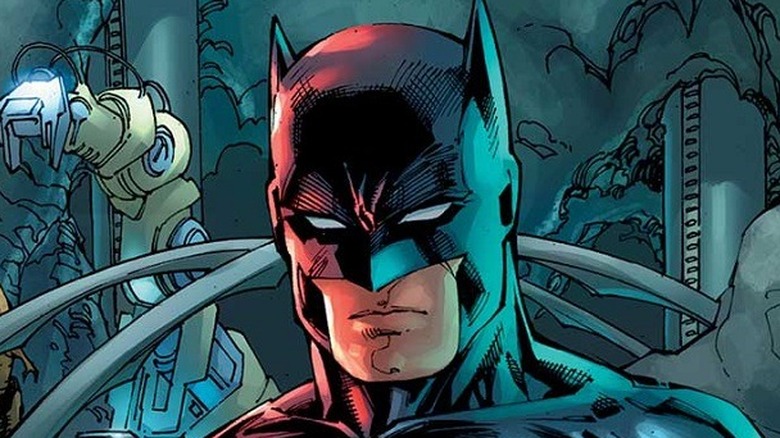
With a cowled and caped Robert Pattinson ready to slide down the bat-pole in March, 2022, and Michael Keaton set to reprise his role as the World's Greatest Detective just a few months later, there's never been a better time to remember that the ongoing Batman saga is just as convoluted in the comics as it is on screen.
While you might think that the grim and gritty Dark Knight didn't exist until the '80s, Batman actually started as a brooding avenger, heavily influenced by "The Shadow" and other pulp heroes of the time. It was the '60s (most importantly, Adam West's TV series) that turned the franchise camp and goofy (Bat-Mite and Ace the Bat Hound, anybody?). Ultimately, though, Denny O'Neil and Neal Adams returned Bruce Wayne to his dark roots, which has been the tone that Batman has taken -- both on screen and in the funny pages -- ever since.
So, atomic batteries to power, turbines to speed -- here are the 15 greatest Batman stories you'll find in the comics.
The Dark Knight Returns
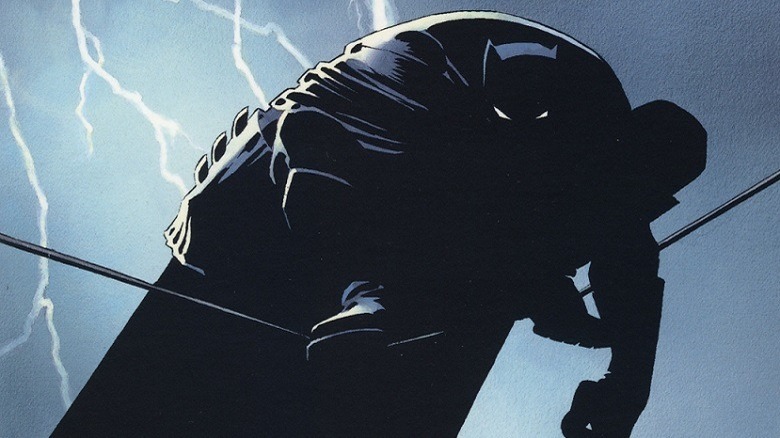
Regardless of what you might think of writer and artist Frank Miller's politics -- or his obvious disdain for Superman -- there is no denying the cultural significance of "The Dark Knight Returns." The seminal comic series responsible for launching a million newspaper articles with headlines like "Biff! Pow! The Comic Grows Up," "The Dark Knight Returns" both reinvented and reinvigorated the Caped Crusader.
Set a decade after Batman's last appearance, "The Dark Knight Returns" takes place in a dystopian Gotham City. Faced with a crime-ridden metropolis and the emergence of a vicious street gang known as the Mutants, Bruce Wayne is forced out of retirement. However, his decision to re-don the cape and cowl places him in direct conflict with his old friend Clark Kent, who is now a superhuman pawn of the U.S. government.
This was a Batman like we'd never seen before: armed and armored. "The Dark Knight Returns" introduced the paramilitary trappings that are now common in Batman comics and movies (The "Batman Begins" Batmobile, the Tumbler, is ripped straight from the pages of "The Dark Knight Returns," as is much of "Batman v Superman: Dawn of Justice"), and it's easy to forget that this is where it all started. Modern comics owe a huge debt to this ground-breaking work, for better and for worse.
Son Of The Demon
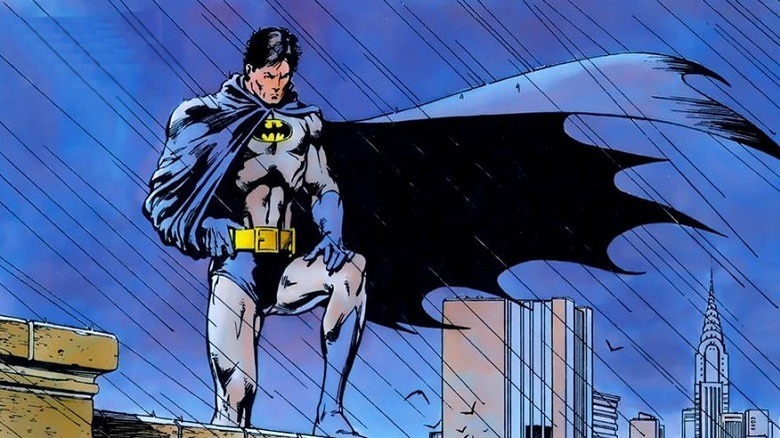
"Son of the Demon" is an odd story. It was regarded as non-canonical for the longest time, but then Grant Morrison's Batman run, particularly his work on "Batman & Son," brought it into official continuity.
Batman is forced into an uneasy truce with his old nemesis, Ra's al Ghul, in order to defeat Qayin, a rogue assassin and terrorist. As they spend more time in each other's company, Batman renews his romance with Ra's' daughter, Talia. She becomes pregnant with Bruce's child but noticing a change in his demeanor -- he's becoming very over-protective -- lies and tells him that she has miscarried.
Batman's son, Damian, would later become a major character in the ongoing comics, giving "Son of the Demon" a surprise importance years after it was published. Beautifully illustrated by Jerry Bingham, "Son of the Demon" is like a fast-paced action movie, impeccably plotted and paced by writer Mike W. Barr. Often the fantasy elements of al Ghul, such as his immortality-gifting Lazarus Pit, spoil his tales, but this one is more grounded, making it one of the very best stories about the League of Assassins.
A Death In The Family
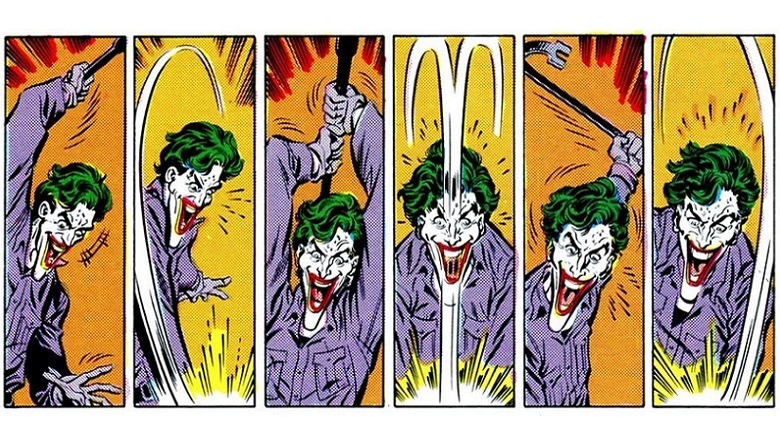
Fearing that Robin, aka Jason Todd, is becoming hot-headed and careless, Batman suspends him from active duty. However, Robin leaves Gotham on a quest of his own, and the two crimefighters end up reuniting in Bosnia to stop the Joker from getting enough uranium to create a dirty bomb. Robin is captured and savagely beaten, and Batman hurries to find him before it's too late. He arrives at the warehouse where Robin is being held just as it explodes.
And what happened next? Well, whether Robin lived or died was up to the readers, who voted using their telephones -- and decided to kill him. A gimmick? Certainly. An effective one? Judging by the amount of press the story received, absolutely.
Regardless of the publicity stunt, it's a powerful story. The Joker has rarely been more chilling, and the beating he gives Robin is absolutely brutal, especially for a mainstream comic. Jason Todd was the second person to take the Robin mantle, with the original, Dick Grayson, having departed for the Teen Titans. Poor Jason was never as popular as his predecessor, but it's still genuinely shocking to see him meet such a grisly fate -- especially since the voting audience is just as complicit as the Joker.
The Killing Joke
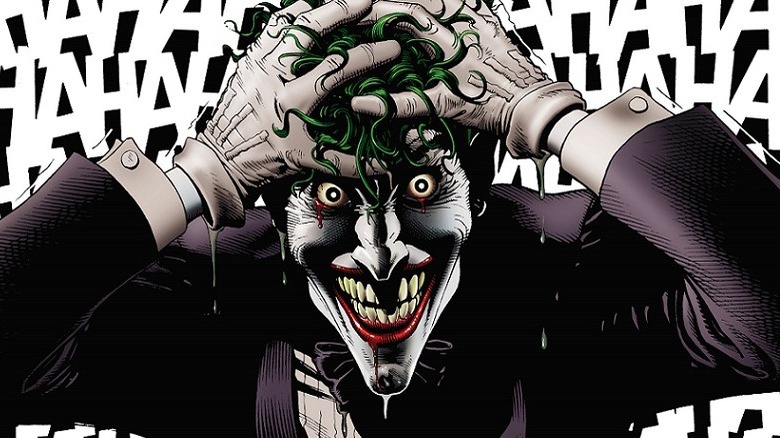
Alan Moore was one of the writers spearheading the British invasion in the '80s, in which a horde of writers and artists from the UK started working for DC and Marvel. The Northampton Magus had already made a name for himself with a groundbreaking run on "Swamp Thing," and his Batman debut arrived with high expectations.
It didn't disappoint. Notable for featuring a Joker story that's the closest thing DC has to a canonical origin for the character, "The Killing Joke" features another one of the Jester of Genocide's escapes from the increasingly insecure Arkham Asylum. He sets his targets on Commissioner Gordon, determined to prove to Batman that "one bad day," like the one that made him the Joker, is all it takes to drive a man insane.
"The Killing Joke" has issues -- the hints that Joker sexual assaulted Barbara Gordon are troublesome, and her crippling is a textbook example of "fridging" -- but it still holds up as a well-written and beautifully drawn Batman story (fellow British export Brian Bolland's work is stunning), with repercussions that are still felt in the DC Universe today.
Arkham Asylum
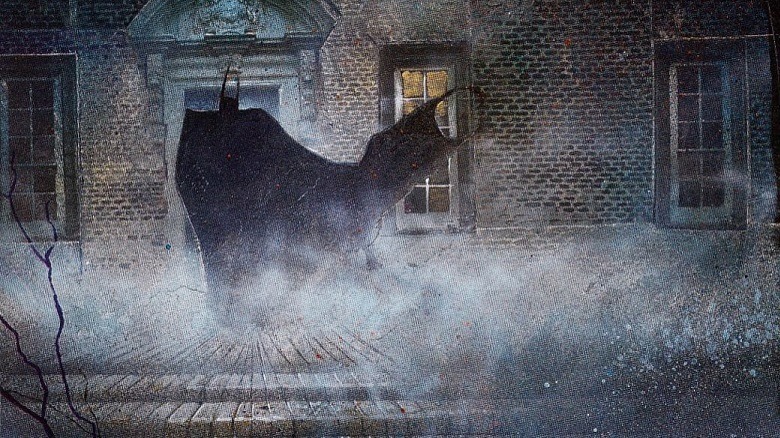
In the words of Fun Boy Three, "The lunatics have taken over the asylum."
Commissioner Gordon contacts Batman to inform him that the Joker and his fellow inmates have taken over Arkham Asylum and are threatening to kill the staff. The Dark Knight enters the ancient building and is forced to run an arcane gauntlet, confronting his most feared foes. "Arkham Asylum: A Serious House on Serious Earth" is Grant Morrison's first Batman story for DC, and it's rife with the symbolism that would feature frequently through his later work. The Asylum is as much a character in the story as any of the villains that inhabit it, an occult labyrinth dripping with dark history.
Dave McKean's glorious, hand-painted art is like a fever dream, every scene bordering on the surreal. Batman resembles a spectral beast, and his rogue's gallery is equally exaggerated and monstrous. Special mention must also go to Gaspar Saladino's lettering -- every character has a distinct font and color. "Arkham Asylum" is like no other Batman story you've read before; it's a truly unique piece of work that still stands up.
Batman/Judge Dredd: Judgment On Gotham
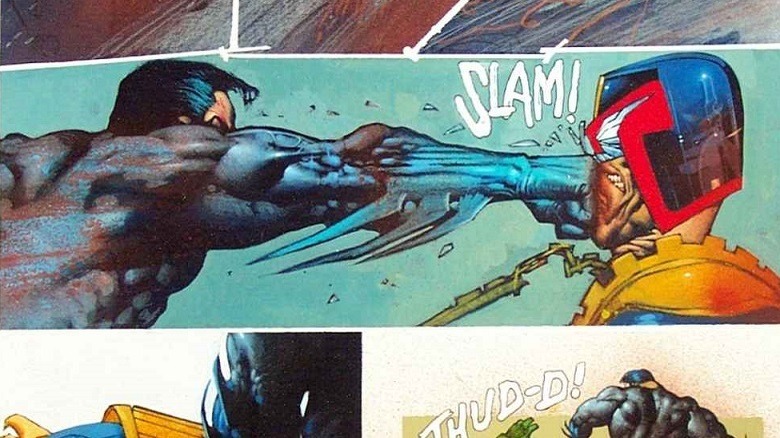
Much later in his career, Batman would encounter the Batman Who Laughs, an evil version of himself from an alternate reality. In "Judgement on Gotham" however, Bruce met the Batman Who Laughs' inspiration: the creature known as Judge Death.
The highlight of "Judgment on Gotham," in addition to the gloriously manic art by Simon Bisley, is the interaction between stoic, stone-faced Dredd and Gotham's most famous vigilante, Batman. They're both on the side of good, but Dredd doesn't see it that way. To Dredd, the law is the law, and the Judge struggles to justify why a man dressed like a furry flying rodent should be allowed to roam free.
The two square-chinned leads (and the psychic Judge Anderson, dragged along for the ride) are forced to reluctantly team up against the combined forces of Judge Death, Mean Machine Angel, and the Scarecrow. "Judgement on Gotham" would be the first of several encounters between the two heroes, who eventually formed a grudging respect for each other, but the first is by far the best, and most darned fun.
Knightfall
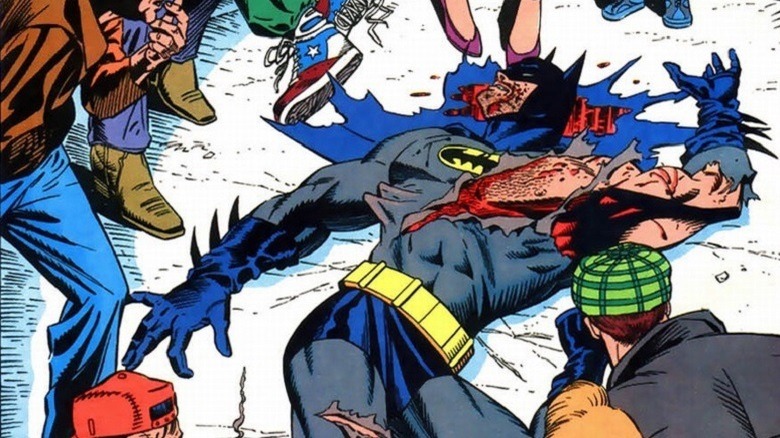
A saga that spanned pretty much every DC title that featured the Bat and his extended family (Catwoman, Robin, etc.), "Knightfall" is a story that would later receive an big-screen adaptation of sorts in "The Dark Knight Rises," Christopher Nolan's last film in his critically acclaimed Batman trilogy.
Bane, one of Batman's few equals in both mental and physical prowess, frees all the maximum security inmates from Arkham Asylum. With Gotham City in chaos, Batman is pushed to his limits as he tries to recapture them all. When he's at his lowest point, his willpower and strength all but gone, Batman is confronted at Wayne Manor by Bane, the supervillain having determined his nemesis' secret identity. Batman is already mentally broken, so Bane makes sure his body follows suit, breaking Batman's back and crippling him.
"Knightfall" is a wonderful example of a lengthy storyline done right. Despite a large number of contributing writers and artists, it's a gripping read. The subsequent "KnightQuest" and "KnightsEnd" storylines cover the details of Batman's eventual replacement, as well as Bruce Wayne's fight to return to health, but the resurrection of the Bat isn't quite as interesting as his downfall. There's a genuine sense of tension and inevitability to it all -- you can feel Batman's exhaustion and desperation in every panel.
Batman Black And White
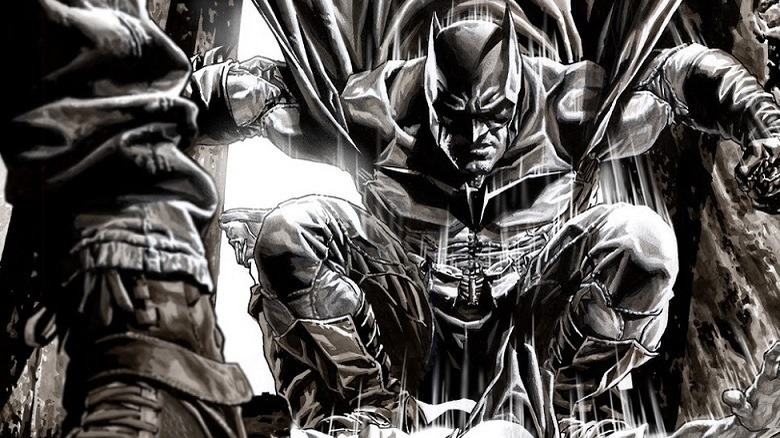
There's no all-encompassing story to "Batman Black and White." Instead, it's a series of comics that do exactly what the title suggests: tell a number of standalone Batman tales with crisp and elegant black and white art. It's a showcase of some of the finest writing and artistic talents who have ever contributed to a comic book, and a number of the people involved had never worked on Batman -- or, in some cases, in comics at all -- before.
"A Black and White World" is a particular highlight, written by Neil Gaiman with art by "2000 AD" superstar Simon Bisley. It's a playful piece that toys with the medium, presenting Batman and the Joker as mere actors who only fight for the benefit of the comic book audience, and serves as an excellent early example of the sort of fourth-wall breaking that Gaiman would become so adept at.
The Long Halloween
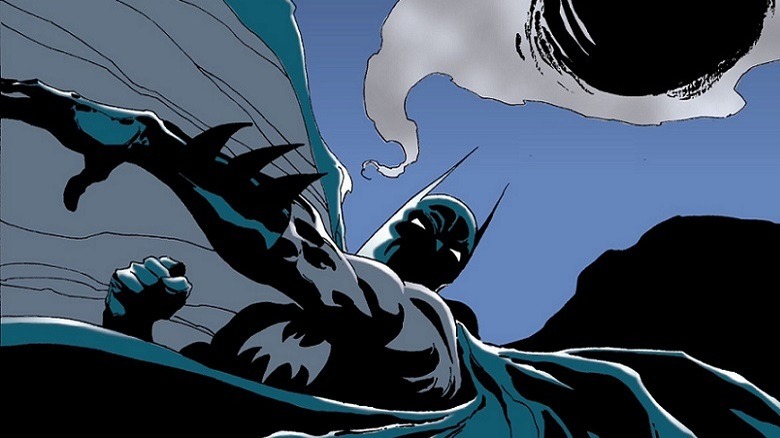
The '50s and '60s saw their fair share of goofy Batman villains: Mr. Camera, Crazy Quilt, and Kite Man, for instance (we'll forgive Polka-Dot Man, who's gone on to redeem himself). However, few are goofier than 1958's Calendar Man, whose entire raison d'etre is to carry out crimes themed around holidays.
So, credit to writer Jeph Loeb for not only bringing the character back in "The Long Halloween," but for reinventing him in chilling style. Set straight after the events of "Batman: Year One" (a title that just missed out appearing in this list), "The Long Halloween" sees a mysterious killer called Holiday arrive in Gotham. Armed with a similar MO as Calendar Man (currently residing in Arkham), Batman is forced to rely on clues and hints given out Hannibal Lecter-style by his imprisoned foe.
"The Long Halloween" is an important story in Batman canon, as it features perhaps the definitive take on Harvey Dent's transformation from District Attorney to Janus-inspired psychotic, and was clearly a huge inspiration on Christopher Nolan's Batman trilogy as well as Matthew Reeves' upcoming "The Batman."
JLA: Tower Of Babel
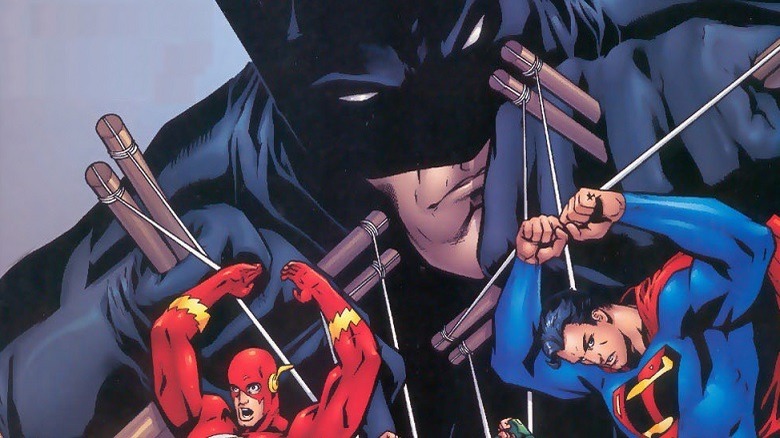
"Tower of Babel" was writer Mark Waid's first story for "JLA," coming right after a superlative run by Grant Morrison. What a way to hit the ground running. The story begins with the members of the Justice League of America falling one by one, their weaknesses all expertly exploited in order to keep them from preventing Ra's al Ghul's latest plot. Batman suspects the worst, and his fears are soon realized: the methods used against the heroes were stolen from Batman's own files. Yes, the Dark Knight carefully prepared safeguards in case he ever needed to take down his colleagues.
It could be argued that Batman's paranoia is what has kept him alive for so long, but "Babel" sees both Batman's caution, as well as his obsession with his dead parents, turned against him. With Batman's dedication to duty, it of course makes perfect sense that he'd keep files on both his enemies and his friends, but to have a villain exploit this is a masterstroke by Waid. And this is before we even get to Ghul's plan: scrambling the language centers in all human brains in order to create worldwide havoc.
The shockwaves from Batman's betrayal lingered in the DC Universe for years, making "Tower of Babel" both an entertaining and important read.
Hush
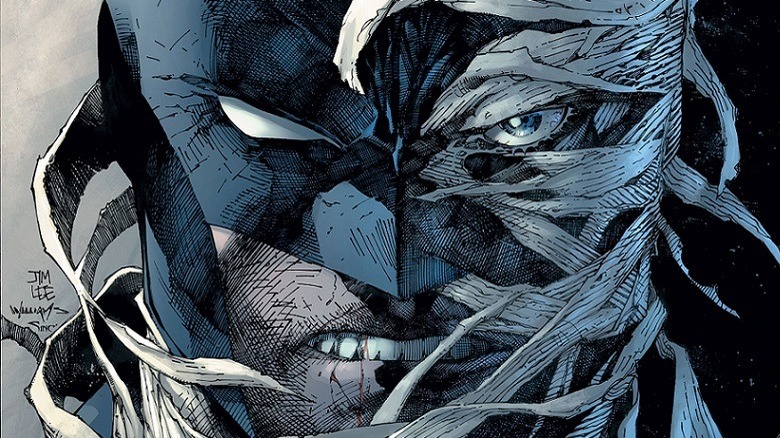
Some of the titles on this list have been chosen because they instigated a paradigm shift in the ongoing Batman saga. Others are here because they demonstrate a novel approach to storytelling. "Hush" is here -- and always had to be here -- for a far simpler reason: It sees Jim Lee, one of the most famous and beloved artists in comics, drawing Batman facing off against a who's-who of his infamous rogue's gallery. If "The Dark Knight Returns" is the "White Album," then "Hush" is a "Best of" collection, but is no lesser for it.
"Hush" follows both the titular assassin and Batman's attempts to stay alive and uncover his mystery assailant's identity. It has everything you could possibly want from a Batman comic: Every villain you could possibly want is here, Superman makes a guest appearance, and Batman does some proper old-school investigation work (it's often easy to forget his "Dark Knight Detective" title). Writer Jeph Loeb's script moves along at a brisk pace, and with Lee's art, "Hush" ends up being both a wonderful celebration of Batman for long-time fans and an ideal story for new readers.
Batman R.I.P.
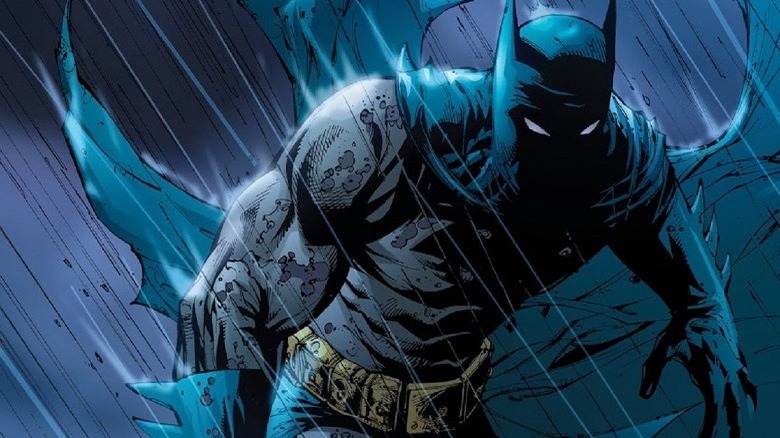
Some will argue that Batman is one of the most powerful characters in comics, and that, given enough prep time, he could defeat anybody. "Batman R.I.P." is the brilliant sum of writer Grant Morrison, plus that prep. During his work for DC, Morrison planted the seeds of this story for years; "R.I.P." is their magnificent, thrilling payoff.
The Black Glove, an old and powerful criminal fraternity, have their sights set on Batman. They plan to break him, destroy everything he represents, make him doubt his core beliefs, and shatter his mind. However, like many before them -- and many who will follow -- they underestimate the Caped Crusader, a man who has a plan for everything. As "R.I.P." shows, he even has a back-up personality that kicks in if his normal one is compromised.
Like all of Morrison's work, "Batman R.I.P." is complex, layered, and rewarding for those who have been paying attention, or who are willing to put in the work. Tying together plot threads from both Morrison's own comics and nearly seven decades of general Batman continuity is a bold move, but somehow it all comes together -- to deliver genuine surprises in a comic franchise that's been running for so long is no mean feat.
Whatever Happened To The Caped Crusader?
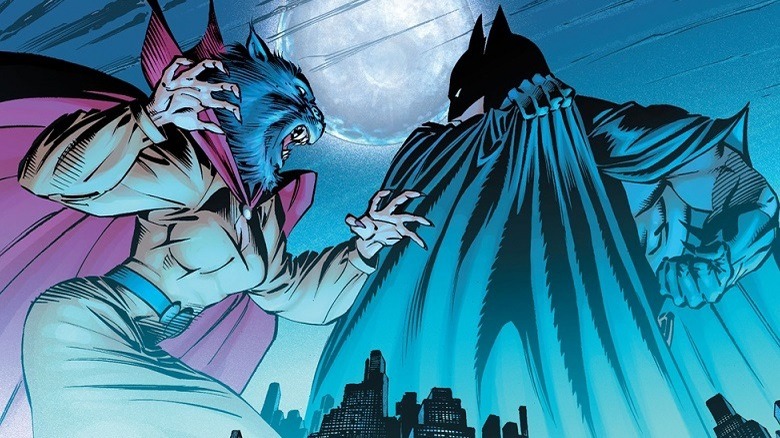
Riffing on the title of "Whatever happened to the Man of Tomorrow?," the ground-breaking Superman tale by Alan Moore and Curt Swan, this two-part story is Neil Gaiman's eulogy to the Dark Knight, presumably set outside continuity (although it was coincidentally published at a time when Batman's fate was unknown, following the crossover event "Final Crisis").
Batman, a disembodied presence, observes his own wake. He's not alone, but the nature of his companion is one of the biggest surprises in this surprisingly touching tale. We see friends, foes, and acquaintances arrive to pay their respects, telling stories about their association with the deceased superhero. It's a celebration of a well-spent life, as well as a lament for an early death -- and, ultimately, a poignant look at the nature of rebirth. There's a line at the start of Morrison's "Batman R.I.P." which is both battle cry and an ethos: "Batman and Robin will never die!" That's a concept that's never been more honestly touched upon than in this brilliant piece.
The Return Of Bruce Wayne
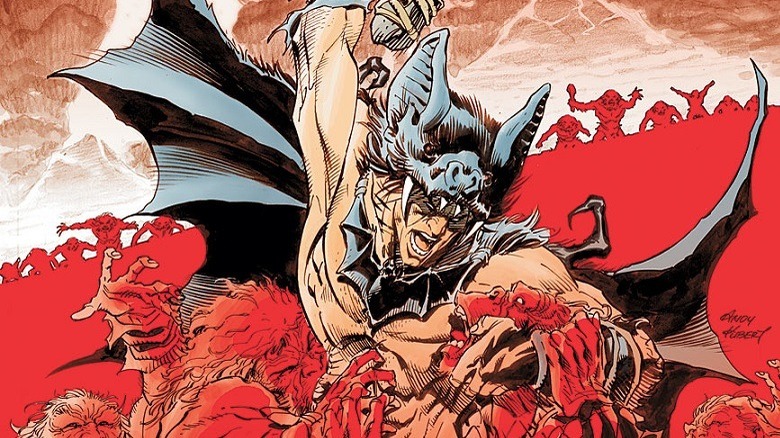
In the closing moments of "Final Crisis", Batman is forced to do something he'd always fought against: fire a gun. But this is no normal gun, and Batman is shooting at no normal target: this is a bullet designed to kill a god. As the shot strikes home, killing Darkseid, the villain fires his Omega beams. Batman is hit and lost in time.
"The Return of Bruce Wayne" begins with our hero stranded in the late Palaeolithic era, and tells the tale of Bruce Wayne's attempts to return home as he's carried through the timestream for six issues. Bruce travels from prehistory to the witch trials in a Pilgrim-era Gotham, from pirate adventures on the seven seas to the Wild West, stops off in the '30s for a noir story, and finally winds up at the end of time itself.
Morrison delivers another ambitious storyline that shouldn't work and yet does, setting the scene for Batman's triumphant return from the grave. In "JLA," Morrison's Batman was always more at home dealing with universe-threatening conundrums than solving simple crimes in Gotham, and "The Return of Bruce Wayne" is a glorious celebration of the character's more outlandish aspects that also ties Batman and his legacy directly to Gotham long, tortured history.
The Court Of Owls
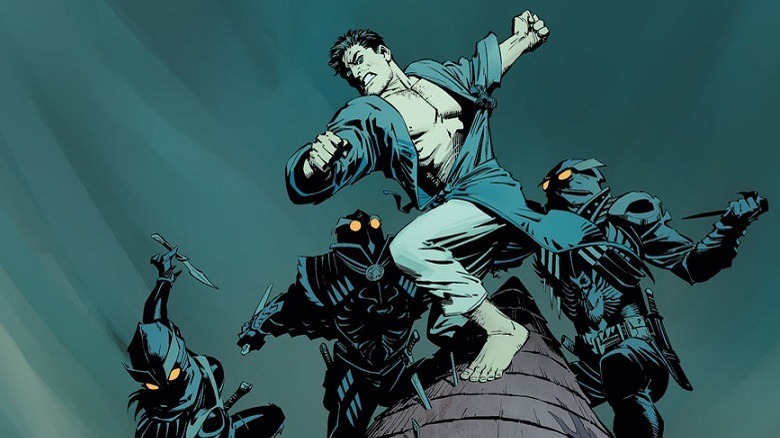
Things that Gotham city has no shortage of: psychotic criminals, art-deco gargoyles, and secret criminal organizations. In this story from writer Scott Snyder and artist Greg Capullo, the Court of Owls have their sights on Bruce Wayne, and send their undead assassins, the Talons, to kill him. Batman uncovers a massive conspiracy that dates back to the dawn of Gotham and learns that the Court of Owls may have had a hand in the murder of his parents.
"The Court of Owls" is terrific. Snyder pulls off the admirable trick of introducing the Court of Owls for the first time while convincing you that they've been pulling the strings from the very beginning. Batman writers sometimes struggle with the comic's supernatural elements, but Snyder balances everything with aplomb -- he even manages to convincingly incorporate Barbatos, the Bat God, into the story, which paid off later in spectacular fashion in Snyder's epic "Dark Nights" crossovers.
Read this next: Here's Where You Can Stream Or Rent Every Batman Movie
The post The 15 best Batman comics you need to read appeared first on /Film.
from /Film https://ift.tt/3Bg2RLl
via IFTTT
Comments
Post a Comment